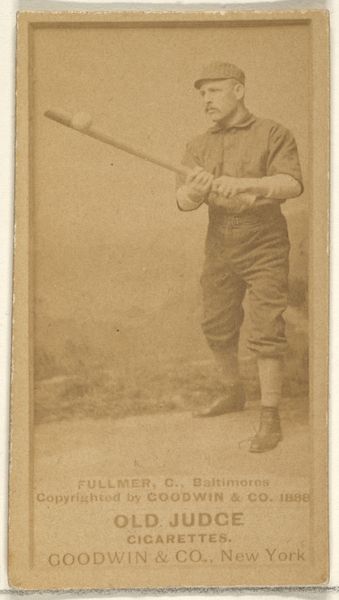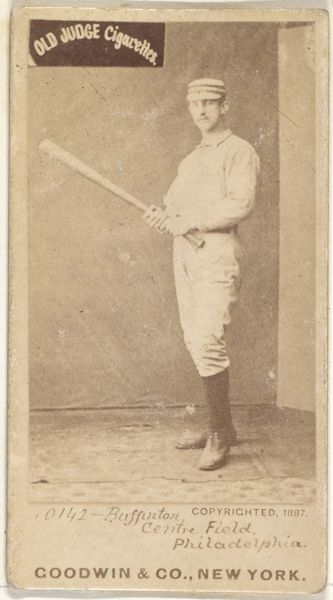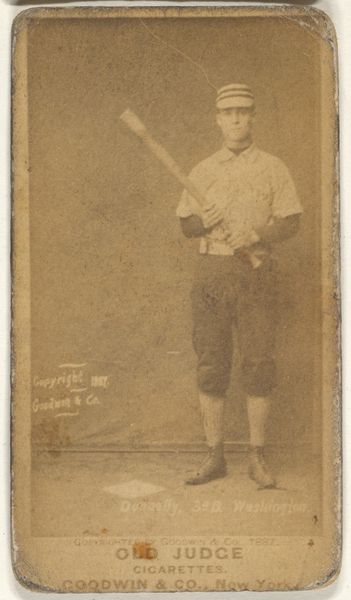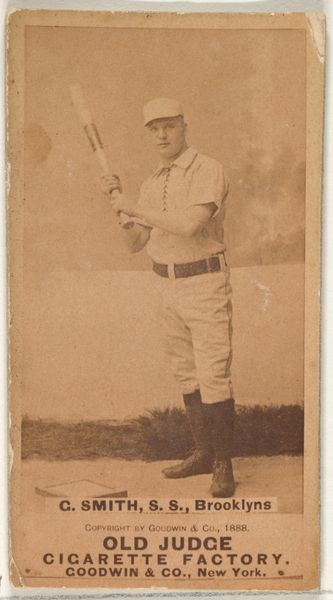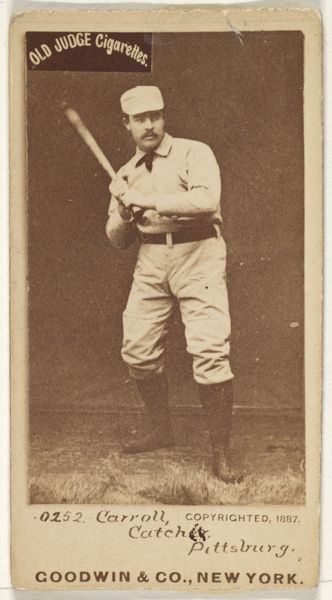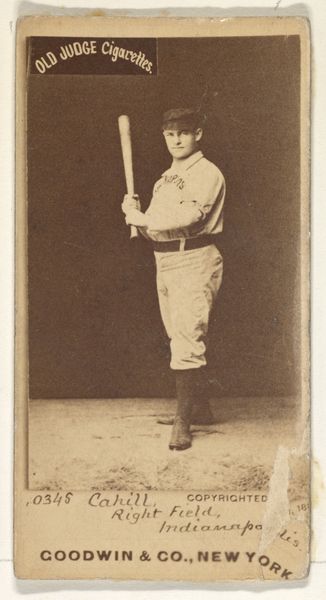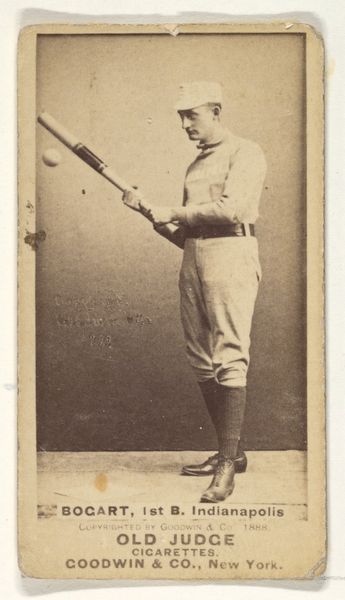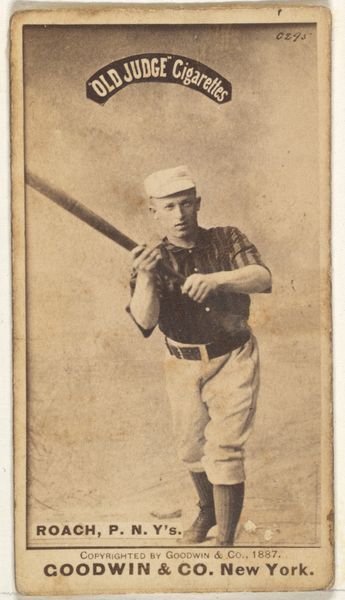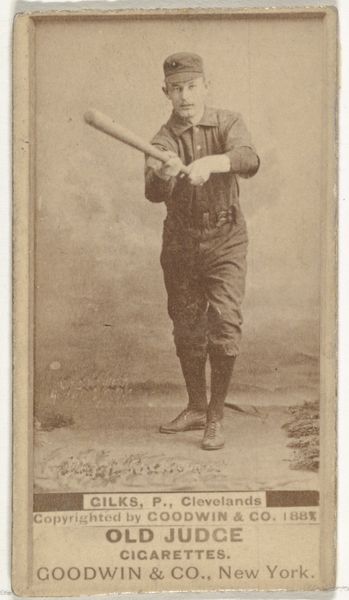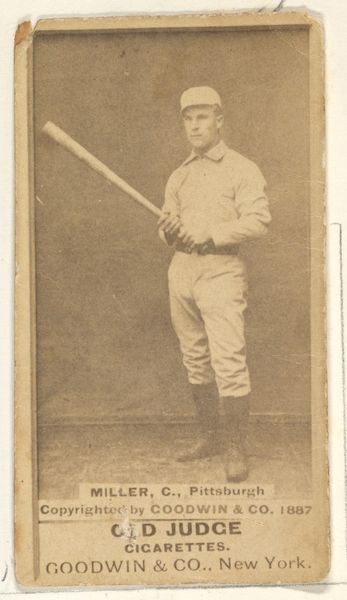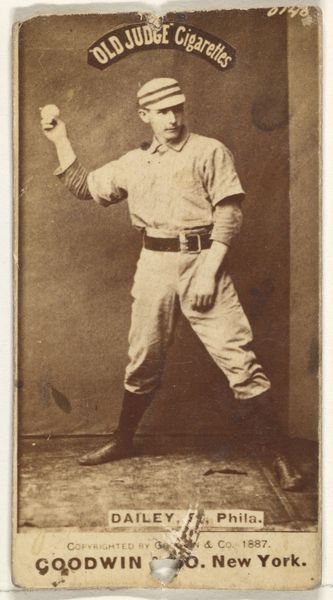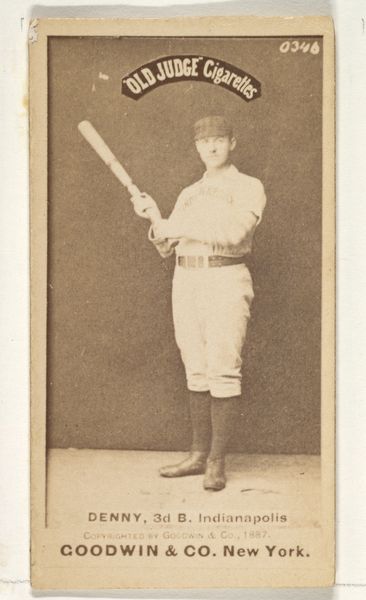
John Francis Coleman, Right Field, Pittsburgh, from the Old Judge series (N172) for Old Judge Cigarettes 1888
0:00
0:00
drawing, print, photography
#
portrait
#
drawing
#
aged paper
#
toned paper
#
light pencil work
#
ink paper printed
# print
#
baseball
#
photography
#
men
#
athlete
Dimensions: sheet: 2 11/16 x 1 3/8 in. (6.9 x 3.5 cm)
Copyright: Public Domain
Curator: This photographic print from 1888 depicts John Francis Coleman, right fielder for Pittsburgh. It’s part of the Old Judge series of baseball cards, produced as promotional items for Old Judge Cigarettes. What's your first take on this image? Editor: Well, the sepia tone immediately transports me. There's something melancholy about it, a quiet dignity in this young man's stance. The soft light and muted colors contribute to a feeling of historical distance, of looking back at the way sporting icons were made and viewed during a particular time and cultural milieu. Curator: It's intriguing to see the layering of meaning here. We have Coleman as an athlete, immortalized on a card, which simultaneously functioned as an advertisement. The cigarette brand itself adds another layer—the fleeting pleasure of smoking juxtaposed with this attempt at enduring fame. What kind of cultural echoes do you pick up? Editor: I'm struck by how different the approach to athleticism was then. Coleman isn't posed in action, there’s no performative aspect—he stands calmly, bat in hand. And I can't help but reflect on how commodified athletes, and even health are today, with such endorsements potentially at odds with ideas of wellness. Curator: The image’s muted tones evoke something very subtle from my memory—perhaps a resonance with photographic portraiture and painted images found in nineteenth-century domestic interiors. His gaze is soft, a deliberate attempt to convey sincerity, virtue. He isn’t merely an athlete; he’s an icon embodying a certain set of values and expectations— masculinity, industriousness, a good reputation. The "Old Judge" imagery only reinforces this intention. Editor: Absolutely. And we can't ignore the political subtext, though maybe that is slightly anachronistic, given when and how the image was received at the time of creation.. But to reiterate and conclude my thinking: images such as this tell a broader story of industrial expansion, rising consumer culture, and—implicitly—exclusion from access in all aspects of life during the late nineteenth century. Curator: Thinking of visual symbolism, I recognize how objects are presented not just to convey information but to communicate deep cultural values—it becomes clear in our age when advertisements are even more pervasive and sophisticated. It's an interesting and even slightly dark realization. Thanks. Editor: Yes, and seeing the commercial realities intertwined with celebrity and sports adds an unexpected dimension of insight. Thank you.
Comments
No comments
Be the first to comment and join the conversation on the ultimate creative platform.
